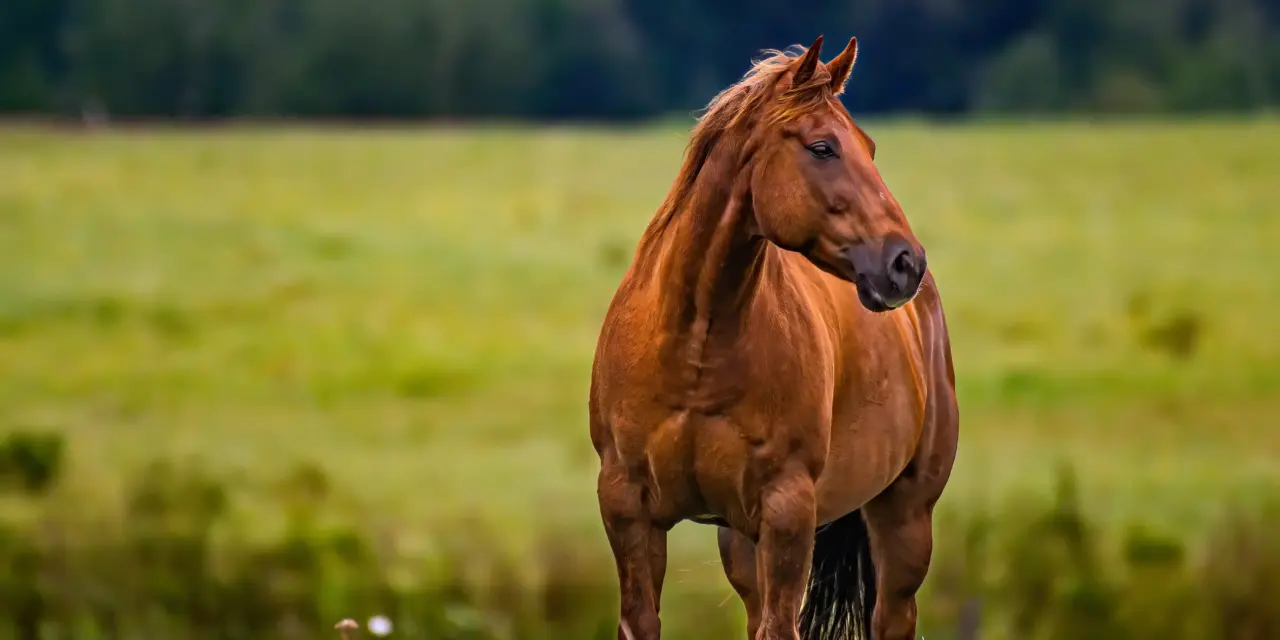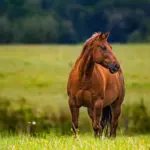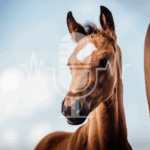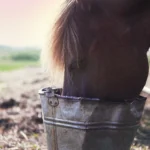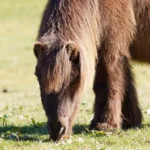- High proportion of type IIa muscle fibres: Horses combine speed and stamina thanks to an exceptionally large number of intermediate muscle fibres.
- Efficient use of lactate: Lactate is not just a “waste product” but also an active energy source, via the process known as lactate shuttling.
- Large glycogen stores: Horses can store a great deal of muscle glycogen, which makes them capable of sustained or intense exertion, but also means they require longer recovery periods.
- Finely tuned muscle control: Deep-lying postural muscles provide stability, while the superficial muscles generate power and speed – allowing precision despite the horse’s large body mass.
- Breed- and training-specific differences: From powerful heavy horses to sprinting Thoroughbreds, muscle structure reflects both breeding goals and the effects of training.
What makes a horse’s muscles so unique?
A horse’s musculature is a fascinating masterpiece of evolution. As flight animals, horses have developed over millions of years into true athletes, with a muscular system that shows some remarkable features setting them apart from other mammals.
Type IIa Muscle Fibres: The perfect combination of strength and stamina
A key feature of equine musculature is the exceptionally high proportion of type IIa muscle fibres. These intermediate fibres combine the best of both worlds: they can contract rapidly for bursts of movement such as flat-out sprints or jumps, yet they are also capable of sustained work thanks to their excellent mitochondrial capacity and oxygen supply.
This unique fibre distribution enables horses to maintain high speeds even over longer distances – a capability rarely found in other mammals to the same extent.
Lactate Shuttling: Turning “Waste” into Energy
For a long time, lactate was seen merely as a sign of fatigue, but horses cleverly use this metabolic by-product as an additional energy source. Through what is known as lactate shuttling, they can transport lactate between different muscle groups and organs such as the heart muscle, where it is then used to generate energy.
Horses have an unusually high tolerance for lactate, enabling them to maintain performance under intense exertion, despite a build-up of lactate in the blood.
Glycogen stores: The internal energy tank
Horses possess particularly large glycogen stores in their muscles. Glycogen acts as a readily available source of energy, especially important during anaerobic or high-intensity work. These extensive reserves allow horses to sustain demanding efforts without the need for immediate external energy intake.
Important for horse owners: Replenishing these glycogen stores can take up to three days after intense training sessions or competitions. This recovery period should always be taken into account when planning both training and feeding.
Precision in motion: How horses control their powerful muscles
Despite weighing several hundred pounds, horses often move with impressive fine motor control and precision. This is made possible by the perfect interplay between:
- Deep postural muscles along the spine, providing stability, balance and coordination
- Superficial movement muscles generating strength and speed
This division of roles allows for both finely tuned movements and powerful, rapid actions.
Breed differences: Specialisation through breeding and training
A horse’s muscle structure reflects both its breeding purpose and its level of training:
Draft horses have a higher proportion of slow-twitch type I fibres, ideally suited for pulling power and sustained work at low intensity.
Arabian horses show a particularly balanced distribution of all fibre types, which makes them natural endurance athletes.
Thoroughbreds have a high proportion of fast-twitch fibres, making them perfect sprinters and racehorses.
Practical implications for horse owners
Understanding the special features of equine musculature is crucial for:
- Optimal training plans that take recovery times into account
- Tailored feeding to support glycogen stores
- Health care through workloads adapted to muscle type
- Performance optimisation according to breed and intended use
Conclusion: A Masterpiece of Nature
A horse’s musculature is a remarkably fine-tuned system that unites strength, stamina, speed and coordination in a truly unique way. This evolutionary perfection also places high demands on management, training and nutrition. Owners who recognise these unique features can support their horse’s muscles to stay healthy, capable and fit for work.
- The unique musculature of horses: Powerhouse for speed and stamina - 26. August 2025
- Organic Selenium and the “Rebound Effect”: Risks of Supplementing Selenium - 15. November 2024
- Magnetic field rugs / pulsed magnetic field /electromagnetic field therapy - 28. March 2024

